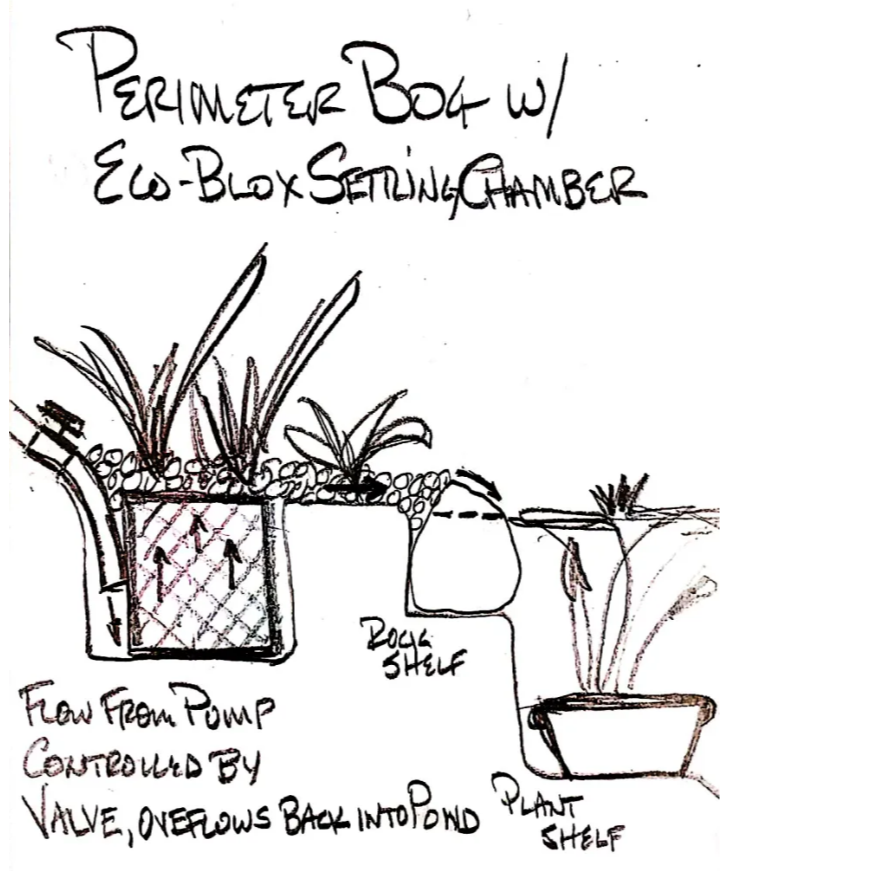
2024-12-16T13:14:18
🌿 Bog/Wetland Filtration: A Natural Solution for Pristine Fish Ponds 🐟✨ Maintaining a healthy and crystal-clear fish pond isn’t just about aesthetics—it’s about creating a balanced ecosystem where aquatic life thrives. 🌊🌱 One of the most effective and eco-friendly methods to achieve this is **bog or wetland filtration**. Let\'s dive into how this natural filtration system works and why it’s a game-changer for pond enthusiasts. --- 🌍 What is Bog/Wetland Filtration? A bog or wetland filter is a shallow area adjacent to your pond, filled with plants, gravel, and rocks. Water from the pond is pumped through this section, where it is naturally filtered by plant roots and beneficial microbes. 🪷💧 These filters mimic the natural processes found in wetlands, purifying water while fostering biodiversity. --- 🛠️ How Does It Work? 1. **Pump Water into the Filter**: A submersible pump draws water from the pond and pushes it through the gravel-filled bog. 2. **Beneficial Bacteria Break Down Waste**: The gravel serves as a medium for good bacteria that consume organic waste like fish excreta and decaying plant material. 🦠🍃 3. **Plants Absorb Nutrients**: Aquatic plants use these nutrients for growth, effectively removing harmful substances like nitrates and phosphates from the water. 🌿✨ 4. **Filtered Water Returns to the Pond**: Clean, oxygenated water flows back into the pond, enhancing its health and clarity. --- ### 🌟 Benefits of Bog/Wetland Filtration 1. **Natural and Chemical-Free** 🌱: Unlike mechanical filters that often require chemical additives, this system relies on nature’s processes. 2. **Low Maintenance** 🛠️: Once established, bog filters need minimal upkeep—just occasional removal of dead plants or excess debris. 3. **Supports Aquatic Life** 🐟🪷: Wetland filters create a mini-ecosystem that attracts pollinators like dragonflies, butterflies, and birds while benefiting fish and plants. 4. **Enhances Aesthetics** 🎨: The lush vegetation and flowing water add to the beauty of your pond, creating a serene, picturesque setting. --- ### 🌱 Best Plants for Bog Filtration To maximize filtration efficiency, select plants that thrive in wet conditions and are fast growers: - **Canna Lilies** 🌺 - **Pickerel Weed** 🟣 - **Water Iris** 🌸 - **Umbrella Palm** 🌴 - **Horsetail Rush** 🌾 --- ### 🐟 Is It Suitable for All Fish Ponds? Bog/wetland filtration works best for: - **Koi Ponds**: Reduces excess nutrients that cause algae blooms. - **Tropical Fish Ponds**: Ensures a stable environment for delicate species. - **Wildlife Ponds**: Promotes biodiversity while keeping water clean. It’s particularly effective for ponds with high fish loads or those situated in sunny areas where algae growth is rampant. 🌞 --- 🌟 Tips for Building a Bog Filter 1. Choose the Right Size: The filter should be about 10-20% of your pond’s surface area for optimal efficiency. 2. Use Quality Gravel: Avoid sand or soil, as they can clog the system. 3. Ensure Proper Flow: Create a gentle flow through the gravel to avoid stagnant areas. 4. Blend with Landscaping: Integrate the filter seamlessly with your pond design for a cohesive look. 🌳🏞️ --- 🌊 Conclusion A bog or wetland filtration system is more than just a filtration method—it\'s a **sustainable solution** that transforms your fish pond into a thriving, low-maintenance ecosystem. Whether you’re a hobbyist or a professional landscaper, incorporating this technique will bring you closer to nature while ensuring the health and beauty of your pond. 🌿🐟 Ready to build your bog filter? Start today and watch your pond flourish naturally! 🌟 --- 💡 Pro Tip: Combine bog filtration with aeration systems for the ultimate pond health solution!

Have a question? Ask here!
Required fields are marked *